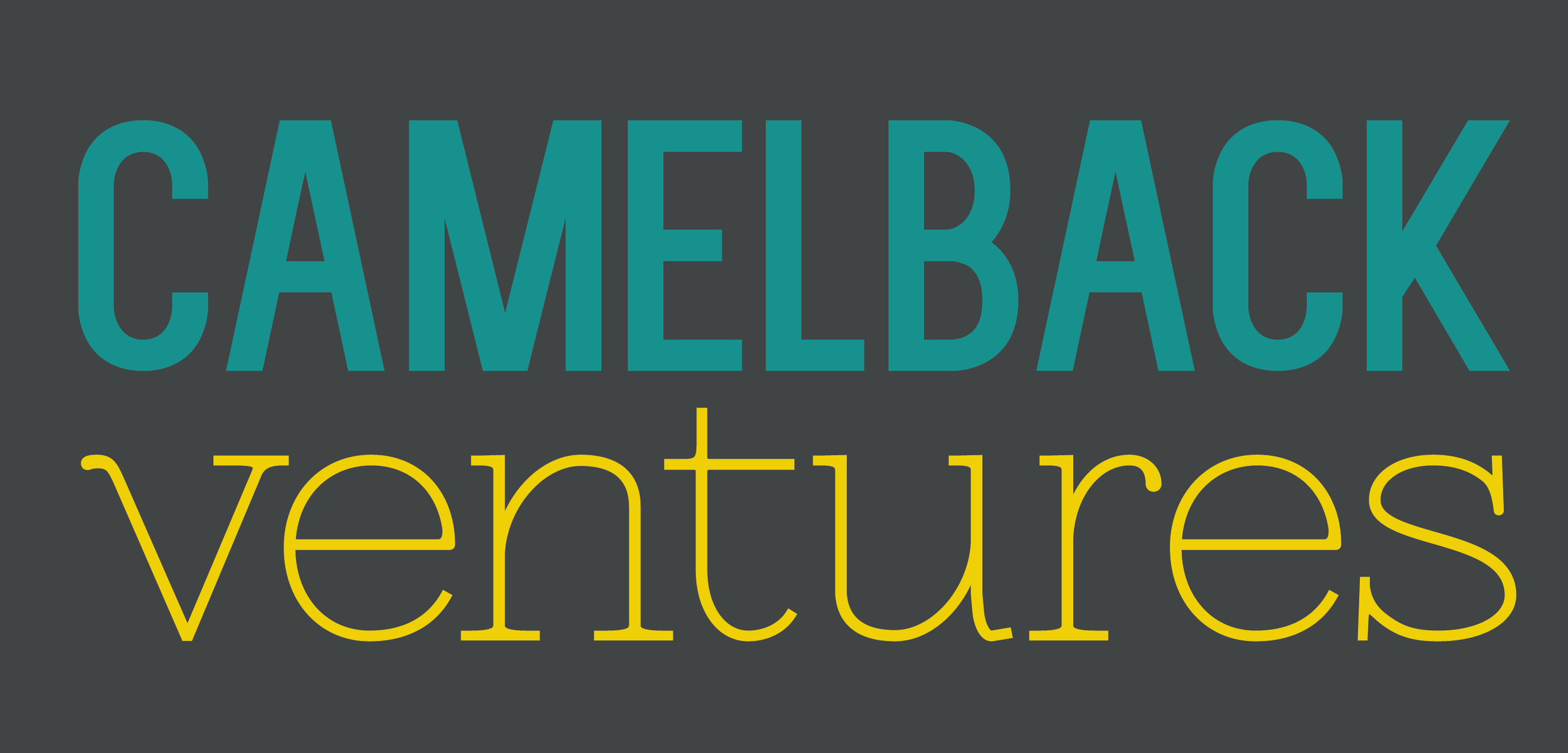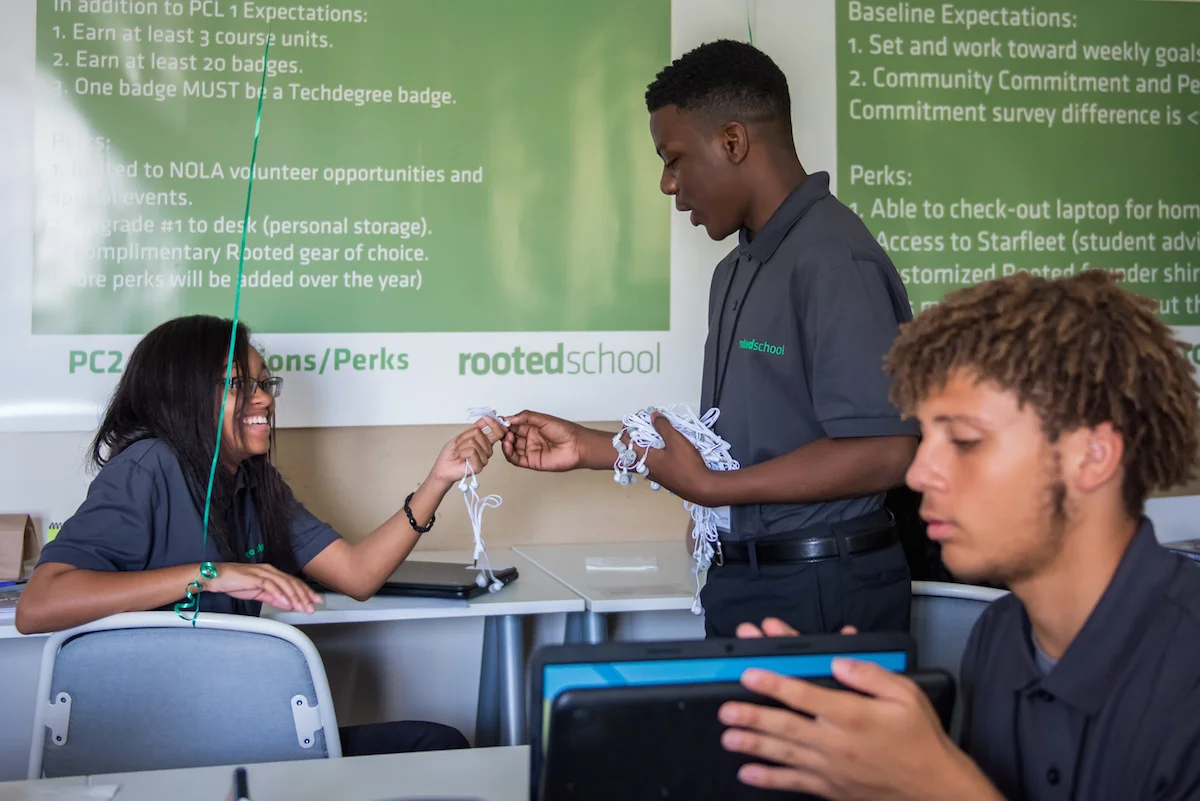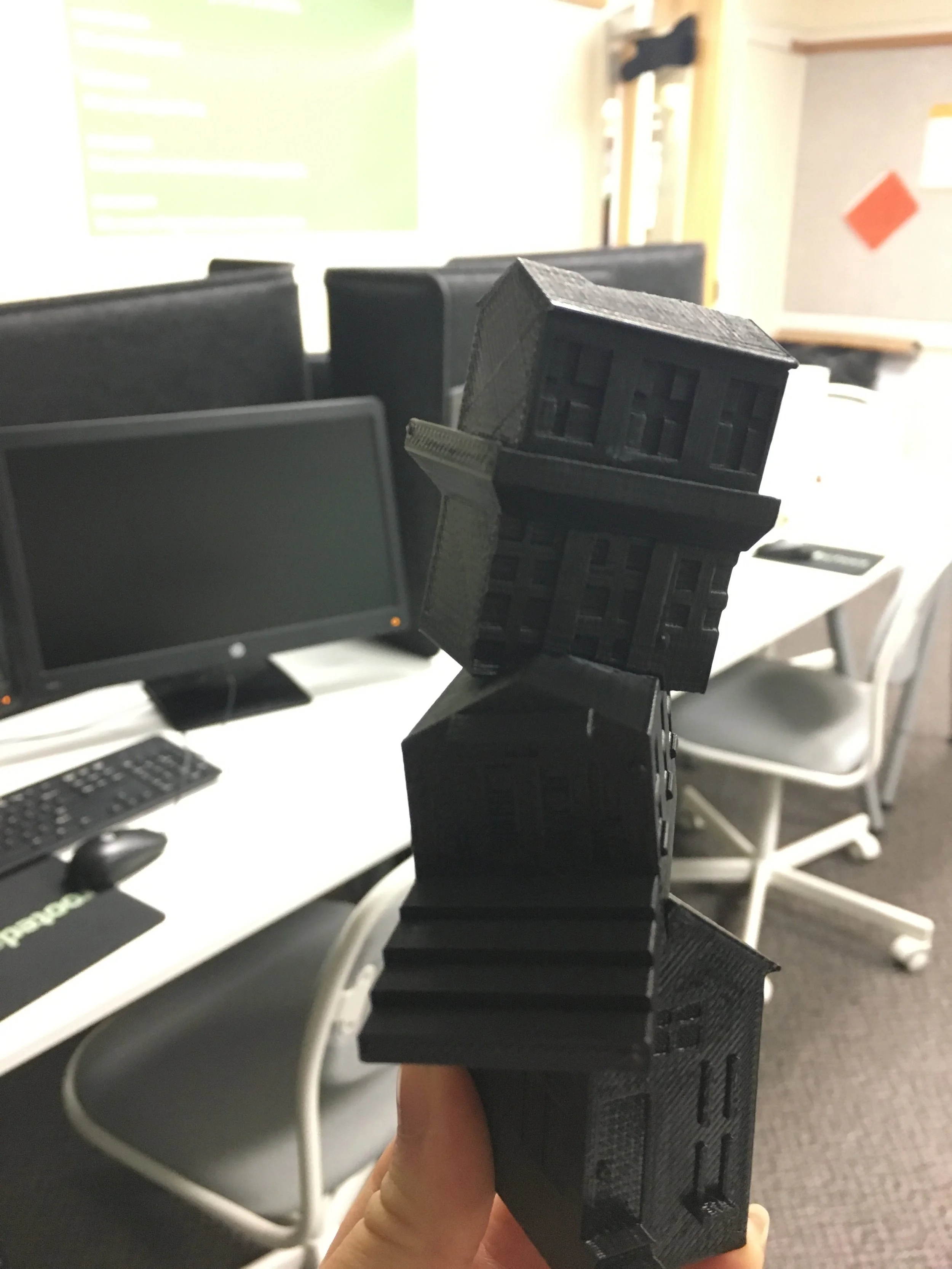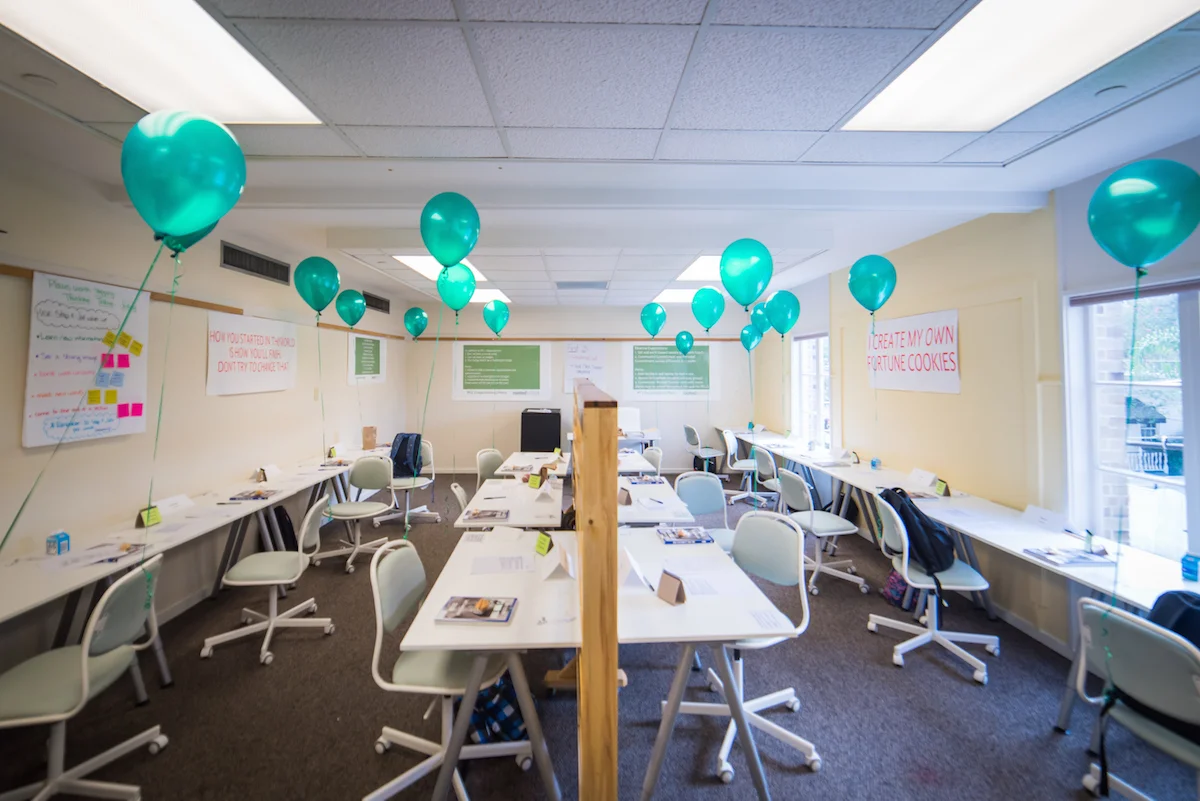The system was not made to support students of color. So I made a school that did
Last week, it was raining and so I took a Lyft to work instead of the New Orleans streetcar. My driver told me I was her first rider of the day because she had just dropped her daughter off a few blocks away -- at Rooted School. She told me how happy her daughter is there, how the school’s technical focus has allowed her daughter to be empowered by her STEM interests, rather than shy away from them.
Rooted is the first Camelback-funded school to open. Founder Jonathan Johnson's journey began as a teacher, when one of his students died tragically in a drug deal, and he resolved to create an innovative school that provides pathways to financial freedom. The school opened its doors in August to its first class of 9th-graders, mostly of color. Rooted features a curriculum that prepares students for the modern workforce with industry-standard equipment and software with classes in coding and graphic design, along with regular coursework. To hear that it is already making a difference in the lives of students and their families is thrilling. As the school came to winter break, I caught up with Jonathan to see the school and hear how the first semester went.
Amanda, Camelback Ventures (CBV): Jonathan, it’s amazing to see this school come to life, congratulations. How are you feeling? This a real place! How's it going?
Jonathan Johnson (JJ): Oh, it’s crazy. We have a great team, and a great first class of students with wonderful families who trusted in our vision. Despite the naysayers, our students are succeeding with our curriculum approach -- 70% are on track to complete and earn a Treehouse credential in programming and coding; by earning this credential, our freshmen will already be worth about $50k on the job market. Furthermore, 50% of students are on track to achieve our ambitious reading goal this year (which is to grow two years or read on grade level, whichever comes first). Louisiana is one of the lowest performing states in reading proficiency in the country, so we wanted to keep this a priority along with our career-focused curriculum.
CBV: That’s fantastic. Early on our tour, you showed me the original banner you had for Rooted School that is still hanging in the stairwell, pixelated logo and all. Can you share more on that and how you got to the school’s name?
JJ: Yes, I keep that banner there because I want to remind myself and our students that we all have to start somewhere, and to remember where we came from. The name of the school was inspired by Tupac Shakur’s poem, “The Rose that Grew from Concrete.” The poem is a metaphor about anyone who overcomes really dire odds to do something great. What often happens is that we get these young people who emerge as roses from concrete, and then we clip them and place them in other flower beds. They get on tracks to go to schools and colleges and careers in cities very far away from where they grew up. And the communities are left with just concrete. My original, and still current, goal with Rooted is that when our students graduate, they can go to a great college or get a great job at Amazon, and that they will still be connected with their community and will support all the people who made it all possible for them, and further opportunities for others.
CBV: Your path to starting Rooted School began about three years ago, but I’ve heard you speak about what happened before you even knew you wanted to start a school.
JJ: Yes...I was a teacher here in New Orleans in Central City, a historically black and low-income neighborhood. Over the course of the year, I had been working closely with a student, Ricky, who was a 16-year-old 8th-grader. He was working hard to catch up in school.
But one day, Ricky was shot and killed during a drug deal near his home while trying to earn money to support his family.
At Ricky’s funeral, I had one of the saddest moments of my life. I learned that he was on track to be the first in his family to graduate high school, and that he would have received a TOPS Scholarship for his academic achievement -- he would have gotten full tuition to any state university in Louisiana. The scholarship would be a game-changer for Ricky and for his family once he graduated. Ricky excelled in school and had big ambitions, yet this was not enough to protect him from the deleterious effects of poverty. And his story is the unfortunate reality of students in our country's most underserved communities.
His death was the catalyst for me, and unlocked this new realm of thinking in my mind. It reawakened within me this problem that I have been wanting to solve my whole life, for myself and for others like Ricky. I thought I had been solving this as a teacher, but Ricky’s death and everything that surrounded it, the before and after, led me to the conclusion that I wasn’t. It was a journey I had to spend time and grapple with, to figure out what I could do to address the crux of this problem. It would take 228 years for the average Black American family to have the wealth capacity that the average White family has, and kids like Ricky and myself were and are swept up in the vortex of this racial gap. I believe that schools and CMOS and nonprofits can play a very big part in advancing social good, and this is where I started to see my journey taking me.
CBV: How did that realization that you needed to start a school feel?
JJ: It was initially not intimidating; it was just an idea I had been making drawings of on a napkin at a bar. In the back of my head, there was this voice telling me, This is never going to happen, and there’s no way anyone will ever pay me to do this. But for me it was non-negotiable -- it had to be a school because that is how paradigms shift. I’ve seen very few ed tech tools move fields forward in the way schools could, at the rate of progress I wanted to see for an entire community.
CBV: What was the journey like through to getting that organization to Camelback? What advice would you give for school founders just starting out?
JJ: As quickly as you can, be clear to yourself and others about why you’re doing this and what you are introducing that doesn’t currently exist. Because if something does exist, be innovative within pre-existing structure. The beating you’ll take along the way just isn’t worth it in my mind. Starting a school includes a huge personal sacrifice, and you have to be ready for that.
Sooner than later, develop the ability to tell that story. That was something that Camelback pushed me on: to hone my message, particularly to be conscious of how different parts would resonate with different audiences here in New Orleans. When you’re a new school, you don’t have any test scores or records to show off. When you’re trying to get support, whether it’s funding or convincing students and their families to register with you, all they have to grasp is your words. And one of my saving graces, I think, is that I had conviction in my words and my emphasis on financial freedom. It helped people believe in me, even when there was no data to back me up.
CBV: How did that come into play when you were searching for your team? A big part of the Camelback Fellowship emphasizes finding the right people for your team. What was your process?
JJ: I had a pilot a few years ago, and it was rough -- I was dealing with the leadership challenges that most people experience when they step into a role of that caliber for the first time. You know, how do you communicate clearly, how do you set goals, how do you set norms, and all sorts of things. I learned the hard way, and made a lot of mistakes. I didn’t necessarily know what the right thing to do was but I got help about what to do better. It led me to Adrian, my future COO. At the beginning, I think Adrian was surprised about how open I was to sending things to his control. The pilot taught me that as amazing as I may be or not be, I can’t do this alone, and the quicker I let go of things for the right reasons, the more the organization can propel forward.
As for the teachers, I’m probably most surprised that they all signed on. I’m not sure I would’ve applied to work at a Rooted school, something that didn’t exist like this, and I’m not sure that I would’ve sent my kid to go to a school like this in its nascent stages. I knew I had to be very, very clear about who Rooted is and what we aim to be, and what kind of people we need in the organization to get there. For some people, it was a year long process of courting, for others, a month or two. For school founders recruiting staff, it’s a constant cycle of presenting what you’re about and being clear about what you stand for.
CBV: A year ago, I saw you interviewing students and families in the co-working office. In the weeks leading up to Rooted opening, you knew that vouchers had been distributed, but you weren’t sure of who would actually show up. What were those weeks like, and then, the first day
JJ: We have students read a book by Seth Godin that discusses mental resistance, that voice in our heads that tells us we’re not good enough. When you’re about to ship anything of value, there’s this constant clamoring in your head of a story of everything that could go wrong. The closer we got to Day 1, the more real that fear became. I started worrying that we didn’t have enough systems for things, or that the students would be confused by the books we gave them, or that everything would just be a mess. But it wasn’t like that at all. We were more prepared than I gave ourselves credit for. It was an amazing day.
CBV: Since then, you’ve had a whole semester of school. Can you tell me about an experience that confirmed to you that the school is having an impact? What do you wish more people knew about the community?
JJ: I’ve always been a believer that young students could learn professional skills early-on, but I became an Official Believer. Twelve of our students recently presented to a panel of company partners that are interested in hiring them when they graduate. The project was to use 3D printing and CAD software, Fusion 360, to design a statue to replace the confederate statues taken down recently in New Orleans. One of our students, Derek, designed a beautiful memorial with multiple, New Orleans-style houses -- some of which are Camelback houses -- stacked upon each other. He watched his grandmother die during Katrina, and this statue was his way of commemorating the resilience of the city and her memory. And it’s so beautiful; he’s uniquely, intricately designed every house, and he presented it to so well. It was the most inspiring moment of the year for me. I literally saw a student produce something that made people question assumptions they previously held about what was possible for kids to do, especially kids of color. If we can continue to change people’s mindsets, we could the change the game in a big way.
I want people to know to know that the system that has been built for students of color historically and systemically does not work for them. These students are gasping to pursue their dreams. Three years ago, no one was really talking about technical or career education again. It was more about high school seats, that getting kids into college was the only option, and that college readiness was everything.
My idea for Rooted was specifically to support students of color, from low-income backgrounds. If a student needs to earn money to support their family, they can get jobs as a coder or a designer, rather than make the choices Ricky had to make. Our promise is that, when every student graduates, they will have a college acceptance in one hand and a good job offer in the other. It’s been awe-striking to see families think outside of the box. They have latched onto these values and are preaching the good news. Families get eviction notices, deal with living paycheck to paycheck, worry about providing food for their kids -- I’ve been there, and I know how hard it is -- and education is finally starting to hear that. It’s crazy to me that there has been and still is this veil over the eye of our field about the lived realities of the people we’re actively trying to serve.
CBV: Closing thoughts as you head into winter break -- what have you learned? What excites you about the future?
JJ: I’ve learned a lot, especially how powerful a compelling story is that’s linked to a vision. It forces people to dream. You can’t underestimate the power of dreams and loftiness. I think that gets undermined a lot in our space. A lot of people are hyper critical and analytical; they want to see the trends, the data. But that couldn’t be further from what I’ve experienced. What’s inspiring is our team working here and how many of chosen their lives to pursuing equity in education. It’s inspiring to see kids who are still with us, who joke with us and trust us, who are with us through the ups and downs. We’re all here to create a great school that can change lives, and hopefully, change whole communities. We’re going to start recruiting for our next class. I can’t wait.
Click here to learn more about Rooted School. Our application for the Camelback Fellowship opens in January. If you are interested in starting a school, click the button below to learn how to apply to the Camelback Fellowship.
This piece is a part of Camelback's Ruthless for Good series, sharing different ways that individuals embody the spirit of our manifesto and what they fight for.





